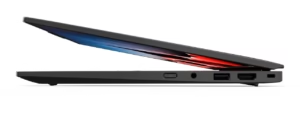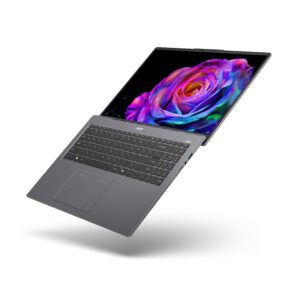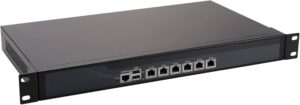Vikram 3201 – India’s Space-Grade, “Make-in-India” Microprocessor

When we think of processors, names like Intel and AMD usually come to mind. But India has now entered this elite league with its very own space-grade microprocessor – the Vikram 3201. Designed and developed by ISRO’s Vikram Sarabhai Space Centre (VSSC) and fabricated at the Semiconductor Laboratory (SCL) in Chandigarh, this chip marks a huge step forward in India’s journey toward semiconductor self-reliance.
What Exactly is Vikram 3201?
The Vikram 3201 is India’s first fully indigenous 32-bit microprocessor made for space missions. Unlike regular CPUs used in laptops or desktops, this chip is designed to operate in extreme environments – from high radiation in space to temperatures ranging from –55°C to +125°C.
Some quick highlights:
- Technology Node: Built on 180 nm CMOS technology (a stable, reliable process).
- Clock Speed: Runs up to 100 MHz – not blazing fast like modern CPUs, but speed isn’t the goal here.
- Instruction Set: A custom ISA developed by ISRO, with support for floating-point operations.
- Programming Support: Full support for Ada language (used in mission-critical software), and a C compiler is also in development.
- Ecosystem: ISRO built an entire in-house toolchain – assembler, linker, simulator, compiler, and IDE.
- Validation: Successfully flown on PSLV-C60 (POEM-4) mission, proving its reliability in orbit.
- Interfaces: Comes with avionics-standard MIL-STD-1553B communication bus.
In short, Vikram 3201 is not about raw performance – it’s about reliability, determinism, and survivability in places where normal chips fail.
Why is Vikram 3201 Important for India?
- Aatmanirbhar Bharat in Semiconductors
- Until now, India depended on foreign-made space-grade processors (like RAD750 or LEON).
- With Vikram 3201, India has its own indigenous flight-proven chip, reducing dependency on imports and restrictions like ITAR (export controls).
- Strategic Advantage
- Space and defence projects need chips that can’t be easily disrupted by supply chain issues.
- Having an in-house microprocessor strengthens India’s national security and technological independence.
- Beyond Space
- Though made for rockets and satellites, the technology can expand into defence systems, automotive electronics, energy control systems, and other high-reliability fields.
- Boost to Semiconductor Ecosystem
- Presented at Semicon India 2025, Vikram 3201 symbolizes India’s growing chip design and manufacturing capability.
- This aligns with multi-billion-dollar government investments to build fab plants, chip packaging units, and design startups.
Vikram 3201 vs Intel & AMD – Which is “Best”?
A natural question is: Can Vikram 3201 beat Intel or AMD?
The answer is: they’re not in competition. Their purposes are completely different.
Feature | Vikram 3201 (ISRO) | Intel/AMD 32-bit CPUs |
Target Use | Space, launch vehicles, avionics | PCs, servers, gaming, enterprise |
Focus | Reliability, radiation tolerance, real-time control | High performance, multitasking, consumer workloads |
Instruction Set | Custom ISA (ISRO) | Standard x86 |
Speed | ~100 MHz | 1 GHz – 4+ GHz |
Ecosystem | In-house ISRO toolchain, Ada | Windows/Linux, huge software base |
Best For | Space missions, defence electronics | Consumer and enterprise computing |
If you need rock-solid performance in space, Vikram 3201 is unbeatable.
If you need to run Windows, Linux, games, or enterprise software, Intel and AMD are far ahead.
Will Vikram 3201 be Available to Normal Users?
As of now, no. Vikram 3201 is a space-grade processor made for ISRO missions and defence-related projects. Consumer availability is not planned, since it is not optimised for everyday computing like laptops or PCs.
However, in the future, spin-offs of this technology could trickle down into automotive, defence, and industrial electronics.
What About the Price?
There’s no official public pricing. But here’s what we can say:
- Space-grade processors are usually very expensive because of their low-volume, high-reliability manufacturing.
- For comparison, chips like the RAD750 (used by NASA) can cost $200,000 or more per unit.
- Vikram 3201 won’t be anywhere near consumer CPU prices – it’s meant for specialized missions, not mass market.
So, don’t expect it to appear in laptops or desktops with an MRP tag.
Final Thoughts
The Vikram 3201 is not about “beating Intel or AMD.” It’s about India proving it can design, build, and fly its own space-grade processor. This is a strategic and technological milestone, one that ensures India’s rockets and satellites run on homegrown silicon.
In the bigger picture, Vikram 3201 is a symbol of self-reliance, innovation, and resilience – and just the beginning of India’s semiconductor journey.





Truly a wonderful article!
I really enjoyed reading this piece—it’s well written, insightful, and very engaging. Thank you for sharing such valuable content; it genuinely made an impact.